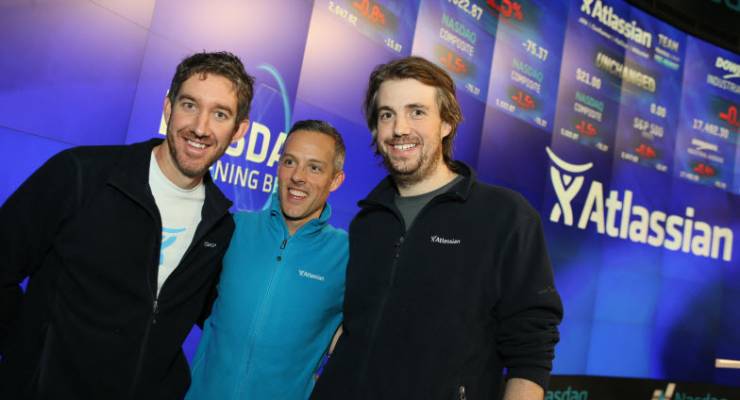
Just over a year ago, Crikey conducted an investigation into the parlous situation of women in tech. At the time, we noted that Australia’s most prominent tech company, Atlassian, had admitted less than 15% of its technical teams were women, as part of an effort to show its commitment to diversity and inclusion.
Whatever the merits of Atlassian’s products (it makes interactive workplace platforms like Jira and HipChat, a kind of poor man’s version of Slack), it is simply brilliant at self-promotion, with a large PR team at the company’s Sydney offices seemingly able to command positive stories from the media, and especially The Australian Financial Review, at will. One of the company’s founders, Mike Cannon-Brookes, has ascended to the status of a kind of Australian Bro-in-Chief; his gift for self-promotion recently on display with a pointless, but widely reported, intervention in the energy debate.
And the company was at it on the diversity issue recently as well, releasing a “State of Diversity” report. What proportion of its engineers were women now, we wondered? Had the company’s laudable commitment to diversity translated into actual hiring? The company scored positive coverage early this year when it announced more than half of its graduate intake was female. How had the company dealt with the problem, which Crikey considered in depth, of the alarming fall in the number of girls and women studying STEM subjects? We quickly clicked on the link to find out.
[What’s driving women out of tech industries?]
Alas — or should that be atlass? — the “state of diversity” report from Atlassian wasn’t, erm, about diversity at Atlassian. It was a survey of tech workers in the United States about what they think of diversity.
Confused, we assumed that, a year on, Atlassian would be releasing its data on how the company itself had fared, and contacted the company to ask where it was. After all, Melbourne tech company Envato, which has been releasing internal diversity data since 2014, provided an update on its internal figures — showing less than stellar progress — as well as a lengthy discussion detailing its current strategies to improve female representation last November.
“Thanks for reaching out,” an Atlassian rep replied to us, using the single most annoying phrase in contemporary media. The report hadn’t been published yet, but we were advised to “stay tuned”. We’ve checked ever since, but, 13 months on from the original, no follow-up report from Atlassian. But, as always, that didn’t stop the company from scoring enthusiastic media coverage — in Forbes, from CNET, and San Francisco publications.
While we wait for Atlassian to update its numbers to — we hope — show a substantial increase in women in engineering roles in the company, here’s a recent, short guide to the ongoing challenges facing women both in tech industries and more broadly in STEM-related disciplines, made in response to Microsoft’s current campaign for women to stay in STEM subjects.








Crikey is committed to hosting lively discussions. Help us keep the conversation useful, interesting and welcoming. We aim to publish comments quickly in the interest of promoting robust conversation, but we’re a small team and we deploy filters to protect against legal risk. Occasionally your comment may be held up while we review, but we’re working as fast as we can to keep the conversation rolling.
The Crikey comment section is members-only content. Please subscribe to leave a comment.
The Crikey comment section is members-only content. Please login to leave a comment.